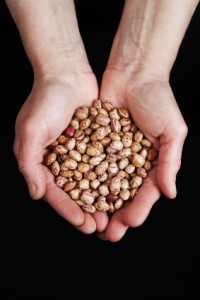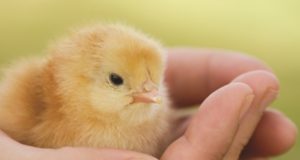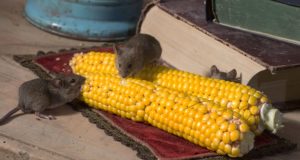Even if you do your best to prepare for the worst, sometimes things just go wrong. There may be a natural disaster in which you lose all of your canned goods, or stuff could actually hit the fan leaving you with limited resources for replenishing your food supply. Whatever the reason, if you don’t have much food to make it through an emergency or season, it is a good idea to know how to ration what you have. Of course, this process will vary based on how many people you are feeding and how long you will need to feed them. Hopefully though, with a little bit of math and a lot of will power, your family’s survival can weather even the most extreme situation.
How Much Do You Have?
 As soon as you know you won’t be able to get more food in the near future, you need to take stock of what you have. So many people wait until the last minute to start rationing, but by then, they’ve eaten way too much of their reserves, making what they have left far from what they’ll need to survive. Gather all of the food you have into one location and create an inventory. Group it into categories that will help you determine which foods need to be eaten first and which will keep until the very end. Consider using categories such as:
As soon as you know you won’t be able to get more food in the near future, you need to take stock of what you have. So many people wait until the last minute to start rationing, but by then, they’ve eaten way too much of their reserves, making what they have left far from what they’ll need to survive. Gather all of the food you have into one location and create an inventory. Group it into categories that will help you determine which foods need to be eaten first and which will keep until the very end. Consider using categories such as:
- perishable fruits and vegetables
- dairy products
- meats and other perishable proteins
- canned, cured, and dried goods
- grains and pasta
- baking/cooking supplies
- miscellaneous
Next to each item, you’ll want to count how much you have. However, counting how many bags, jars, items, etc. of each type of food you have will be too laborious for the rationing process. Most experts recommend weighing foods and keeping track of them that way. Although the density of the food will affect the weight, you can still generalize that one cup is often equal to eight fluid ounces. For dry goods, the weight of one cup will vary greatly, so it’s best to have a conversion chart on hand. Once each food has been accounted for, add up how much you have in each category. It’s a good idea to update this list frequently. That way, you can see how fast you are consuming what you have, which will then help you determine whether or not you need to revise your rationing plan or take note if food is disappearing without being accounted for.
How Many People Are You Rationing For?
The next step in the process is taking into consideration how many people you will be feeding over this difficult period of time. If it will just be you and your dog, then the math won’t be too difficult. If you are taking care of an entire family though, rationing can get a lot trickier. In many cases, when entire communities are affected, some families will help out others who were not so prepared for the disaster. In this case, you could be feeding many more than you expected, which is yet another good reason to make sure everything is rationed.
How Much Food Will Each Person Need?
When you know whom you will be feeding, you can start creating portions. Don’t forget to include the family pets and/or livestock— although if things get too extreme, they may have to be sacrificed in order to protect the family. You will need to consider the minimum amount of calories needed for each individual in your rationing plan. Although these needs will differ based on the age, size, and activity level of each person, in general, you can follow these bare minimum calorie intake guidelines for the average person:
- Adult male: 1700
- Adult female: 1328
- Elderly male: 1475
- Elderly female: 1100
- Teenage male: 1655
- Teenage female: 1486
- Youth male: 1230
- Youth female: 1165
- Baby/Toddler: 500-1000
Remember, these amounts are minimums, and if someone in your household is out chopping wood or hunting all day, they will definitely need more calories than the bare minimum. Also, everyone has different metabolic rates, and not taking in enough calories could be extremely dangerous, so be sure to adjust your rations accordingly.
Once you know how many calories each person needs, you’ll need to determine how many calories each food item can give them. Of course, if you have any packaged goods, there will be calorie and serving counts right on the box. If you have a barrel of rice, corn, or other food though, you will need to determine this for yourself. There are thousands of possible foods you could have on hand, so it is impossible to list them all here. If at all possible, you should try to keep a record of conversions on hand in the pantry so you don’t have to do the math each time you eat. Most people portion everything out into meals from the very beginning, so they only have to worry about the math once. Some of the most common and basic foods will generally follow these guidelines:
- White rice: 1 cup = 686 calories
- Oats: 1 cup = 147 calories
- Spaghetti: 1 cooked cup/2 oz. dry = 221 calories
- Egg: 1 Egg = 75-100 calories (depending on the size of the egg)
- Milk (2%): 1 cup = 138 calories
- Ground beef: 100 g = 164 calories
- Pork: 100 g cured = 541 calories (250 if fresh)
- Chicken: 100 g = 200 calories
- Corn: 3.5 oz. = 354 calories
- Potatoes: 17 oz. baked = 255
- Spinach: 3 oz. = 20 calories
- Carrots: 1 cup = 52 calories
Getting the right amount of calories isn’t enough to stay healthy. You will also need to make sure you maintain a balanced diet, including protein, dairy, fruits and veggies, and carbs. Since carbs are easier to store and many basic carb-loaded foods can be baked from bulk baking supplies, you will probably eat a lot more of those. Also, unless they’re canned or frozen, fruits and vegetables will go bad. For this reason, your protein and vegetable portions will likely be much smaller than they would be when food is not scarce.
How Long Will It Need To Last?
After determining how much food you have and how many people you’ll need to feed, you can do the math to figure out how long the food you have will last. Simply consider what one meal will look like. Will it be for two adults, two kids, and one elderly person? If so, you can count up the calories needed and how much from each food group will be consumed. Then, that total will tell you how much food you will lose from one meal. From there, you’ll need to divide your food totals by that meal total. That will tell you how many meals you have. Of course, depending on the length of your situation and the needs of your family, this could go faster than expected or could even be stretched longer. It all depends on how strict you are with your rationing. It’s a good idea to have one person in charge of rationing, to make sure things are consistent and so that nobody takes too much for any one meal. Although we can’t always prepare ahead of time, the more food you can raise, grow, and store, the longer you will be able to survive and the better the health of your family will be when it’s finally time to stop rationing.
©2012 Off the Grid News
 Off The Grid News Better Ideas For Off The Grid Living
Off The Grid News Better Ideas For Off The Grid Living



